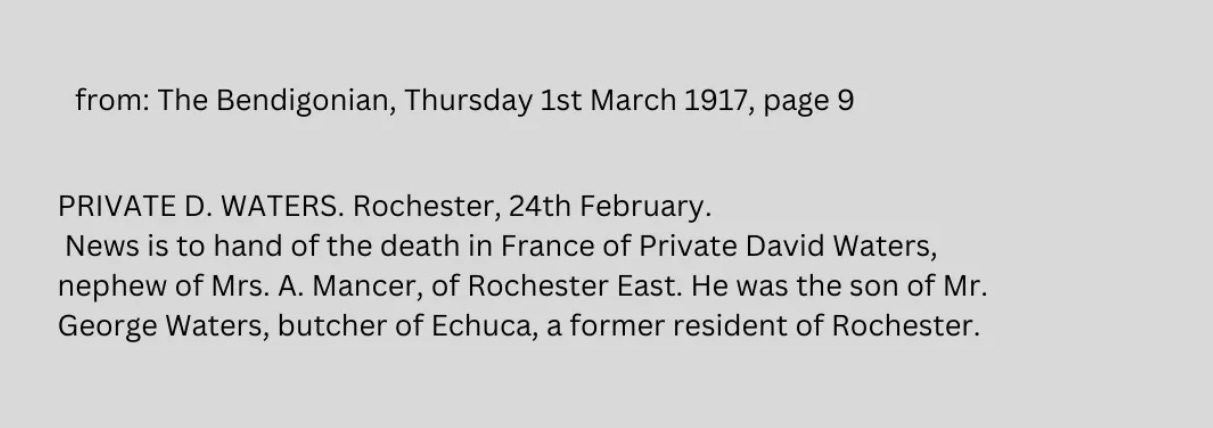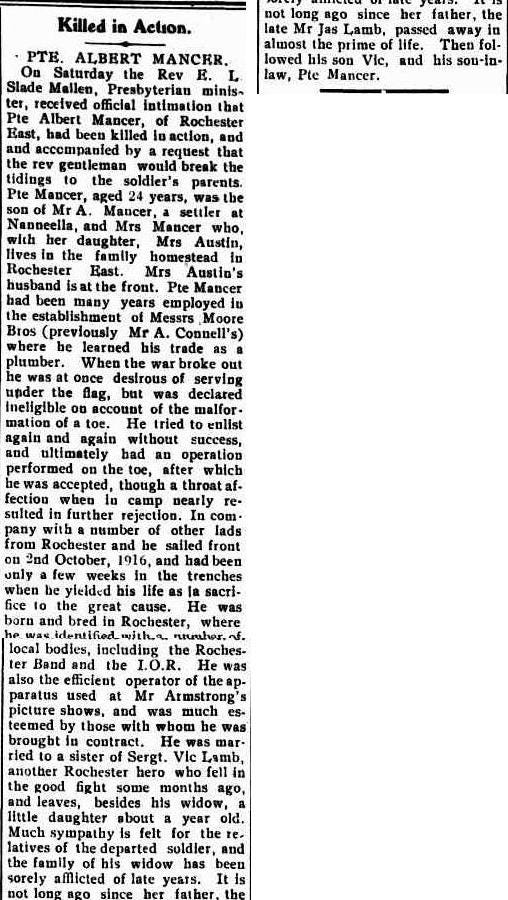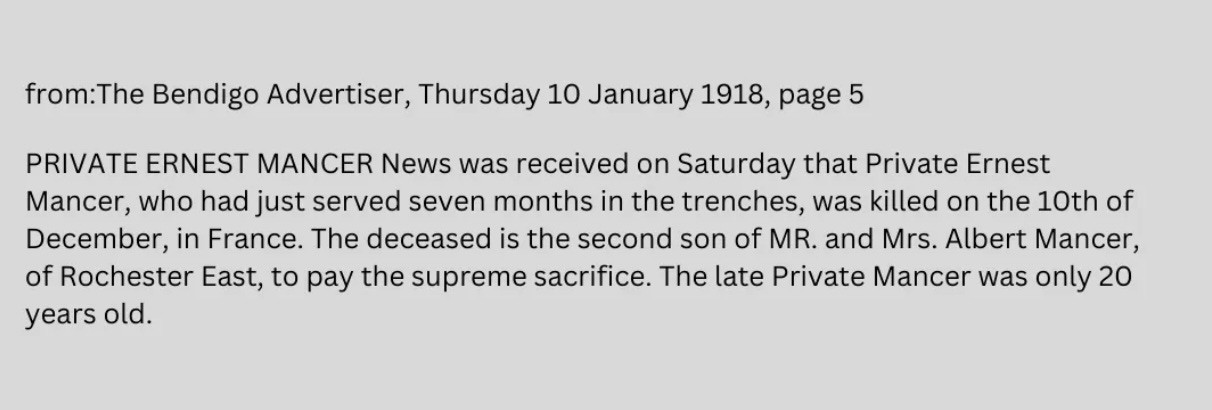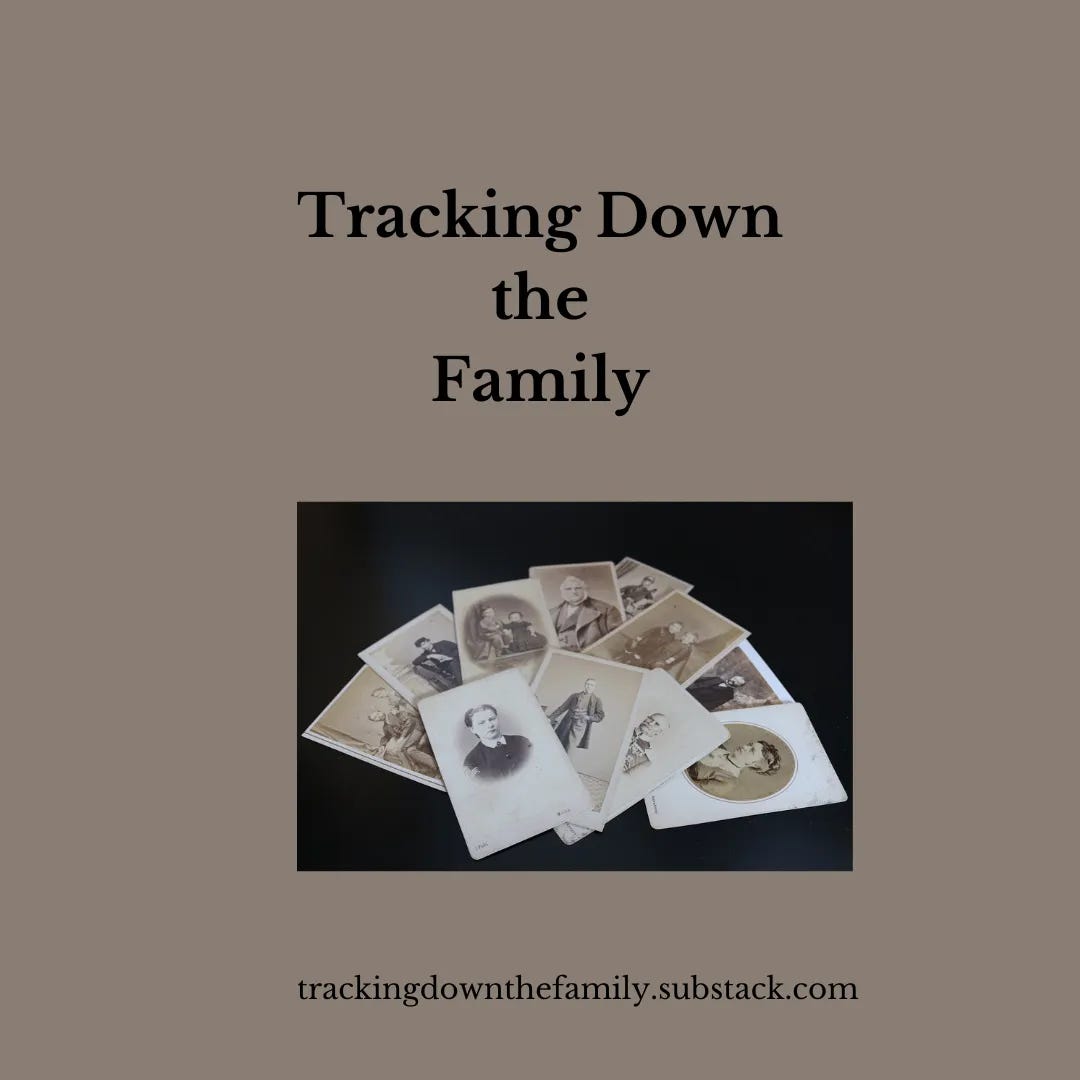Remembrance Day is observed every year on 11 November, with one minute silence, to give remembrance to the end of the First World War, that ended at the 11th hour of the 11th day of the 11th month in 1918.
In Australia, Remembrance Day is always observed on 11 November, regardless of the day of the week, and is not a public holiday. It is a day when people can pay their respects to the huge number of soldiers who died in battle
Remembrance Day is also known as Poppy Day.
For this Remembrance Day post, I am remembering three young men in my family, two brothers and their cousin, who lost their lives in World War 1. These three young men were nephews of my Great Grandfather Ernest Waters. I knew my great grandfather well as a child, and do wonder at the pain he must have felt, as the bad news continued to arrive during the war years.
David Waters
David Waters, Private. Service Number 2711, Eighth Reinforcements, 5th Batallion AIF
Born in 1897 at Rochester, Victoria, Australia, David enlisted in the army on 8 April 1915, at age 18. He was killed in battle, in France on 11 February 1917. David Waters’ death is commemorated at Dernancourt Communal Cemetery in France.
David Waters
from: The Bendigonian, Thursday 1st march 1917, Page 9
Albert William Mancer
Albert William Mancer, Private. Service Number 2716. 60th Batallion
Born in 1892 at Rochester, Victoria, Australia. He enlisted in the army on 25 August 1916, at age 24, and served in the 60th Batallion. Albert died in the front line trench at the Battle of Bullecourt on 12 May 1917, age 25. Memorial Wytschaete Military Cemetery in Belgium
Albert was raised in Rochester, and upon finishing school he was employed at a timber yard owned by the Moore brothers, where he trained as a plumber. He was also very interested in movies, and regularly worked the projector at the local theatre, known at the time as the picture show. He was a prominent member of the Rochester Brass Band, and a member of the Order of Rechabites, a society that promoted sobriety and clean living.
When war broke out, Albert was very keen to enlist. He made three attempts, but was turned down each time because he had a malformed toe. It was thought that this slight defect, may restrict how much marching he could do.
In 1915, Albert married Florence Lamb, the sister of a serving soldier. He eventually had an operation to fix the problem with his toe. Once healed, he was finally accepted by the Australian Imperial Force in August 1916. He was posted to the 60th Battalion and sent to England for further training in October 1916.
Private Mancer joined his battalion in France in February 1917. On 12 May 1917, two companies of the 60th Battalion moved to the front line near Bullecourt, and in the early hours of the morning, the Germans began heavy artillery firing on the Australian line. Private Albert Mancer was sitting on top of a dug out, when he was instantly killed by rife fire. He was 25 years old.
Albert Mancer left behind a widow and an infant daughter. His wife’s brother, Vic Lamb, was also killed in action, as was his own brother, Ernest, in 1918.
Wytschaete Military Cemetery in Belgium
from: The Rochester Express, Tuesday 5 June, 1917, page 3
Ernest Charles Mancer
Ernest Charles Mancer, Private. Service Number 5145. 7th Batallion
Born in 1898 at Rochester, Victoria, Australia. He enlisted in the army on 25 January 1916. He was killed on 12 December 1917, in the battle of Flanders in Belgium, age 19. He was part of the 15th Brigade Trench Mortar Battery and was in a trench, when a shell in the gun exploded, killing him instantly.
Ernest Charles Mancer
from: The Bendigo Advertiser, Thursday 10 January 1918, page 5
Photo: cwgc.org: Derry Road No 2 Cemetery, Messines, Belgium.
LEST WE FORGET
*Please note: punctuation and paragraphs have been added to transcribed articles for ease and speed of reading.
Sources: (do these as footnotes )
http://nla.gov.au/nla.news-article90856196
http://nla.gov.au/nla.news-article119592490
http://nla.gov.au/nla.news-article90832535














Thanks so much for this Kerryn. I hadn’t realised that Stanley died in WW1 also. I’ve only done patchy research on this branch. I’d love the photo of the grave to add. I appreciate you letting me know. I will try to get more info on Stanley and add it onto the site.
So many men lost to the futility of war, a lost generation. A great piece of research Jennifer and how wonderful that you have pictures of two of the men. By recording their stories their sacrifice and memories will live on.